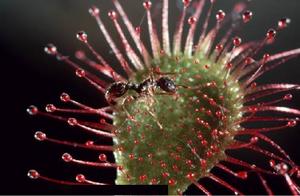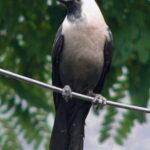Many ecosystems have different types of Species those have different manners of interrelationship among them. These species interact with each other to establish a stable ecological balance. These types of relationships may be of interspecific or intraspecific categories. Different types of associations are discussed below :
a) Saprotropism: In this type of association one type of organism is living, where other is dead organic matter. Living organisms grow on the dead and decaying organic bodies like wood, bread, lemon etc. and take their nutritive elements from those dead organic materials. Saprophytic nutrition is found in non-green plants which draw their nourishment from dead matters. Saprophytes may be of two types : Total and Partial.
Total saprophytic plants completely depend on the dead and decaying substances for nutrition. E.g. Mucor, Agaricus.
b) Antagonism: In this type of interaction either one or both type of organisms are harmed. This association is subdivided into following categories :
1. Parasitism: In this type of relationship one type of organism is benefited and other is harmed. In this category of heterospecific association one organism (Parasite), lives at the expense of other associated organism (Host). Among plant kingdom Dodder (Cuscuta reflexa) collects its nutritive elements fro the host plant with the help of sucking root called Haustoria. Among kingdom Animalia two types of parasites are found : Ectoparasite (living outside the host body) and Endoparasite (living inside the host body). Round worm is an ectoparasite living inside the human small intestine and draw nutrition as endoparasite but Louse is an ectoparasite at it lives outside the human body i.e. on the outer body surface.
2. Exploitation : In this type of relationships one organism enslaves the other organism.
3. Predation : In this type of association one organism catches and kills the other type of oraganism and take it as food. As Tiger catches deer, Pitcher plant catches insects for their food, Human catches fishes.
4. Ammensalism or antibiosis : In this type the chemical secretion of organism’s body harms the another but no nutrition takes place. The chemical secretion is called Antibiotic. Penicillin is an antibiotic produced from the fungus Penicillium notatum that kills the bacterium Staphylococcus bacterium.
5. Competition : In this type of nutrition two organisms when living in a specific ecosystem compete with each other for food and shelter.
c) Symbiosis : In this type of relationship living organisms live together and help one another. It is mainly of three categories :
1. Commensalism : In this type of association one organism may be benefited and other may remain neutral but no one is harmed. Fireasfer fish lives inside the cloacal cavity of Sea cucumber to protect itself from the attack of predators. Here no one is harmed, but Fireasfer fish is protected. So, it is an example of commensalism relationship between them.
2. Mutualism : It is an obligatory relationship between two organisms where both of the individuals are benefited by each other and they are physiologically inter-dependant with each other. The association between the algae Zoochlorella and Hydra is an example of mutualism where both are benefited by each other. Lichen is the result of a union between a green alga and a fungus. The fungus gains oxygen and carbohydrates from the alga and the alga obtains water carbon dioxide and mineral salts from the fungus.
3. Protocooperation : this is an facultative relationship between two organisms where both the individuals are benefited by each other but they can also live independently. Association between hermit crab and sea anemone is an example of Protocooperation.
d) Neutralism : This is one type of relationship between/among two or more type/types of organism/organisms where they live together but neither they are benefited nor harmed. In the freshwater bodies this type of relationship is found between Hydra and Phytoplankton
GLOSSARY FOR HELPING THE READERS :
1. Intraspecific : between/among same species.
2. Interspecific : between /among different species.
3. Organic : related to living body.
4. Nutritive elements : substances required for the purpose of nutrition of organisms.
5. Heterospecific : between/among different organisms.
6. Kingdom Animalia : animal kingdom.
7. Pitcher plant : an insectivorous plant.
8. Cloacal cavity : a part of alimentary canal contains faecal elements.
9. Alga : singular form of algae.






